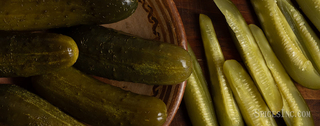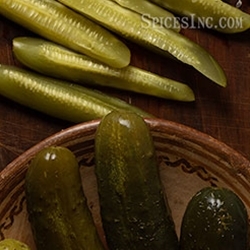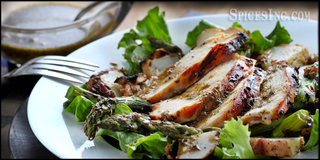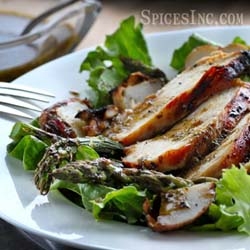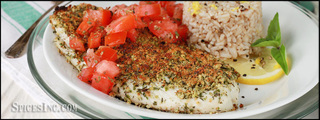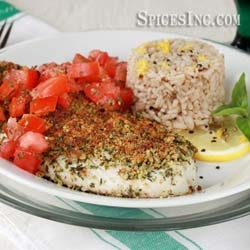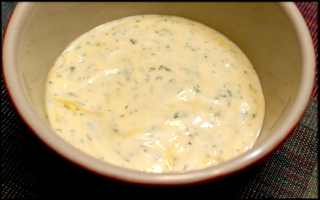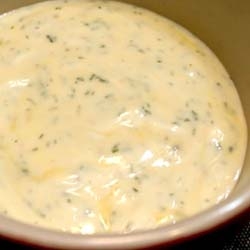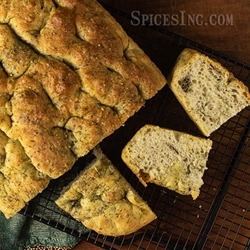Dill Weed
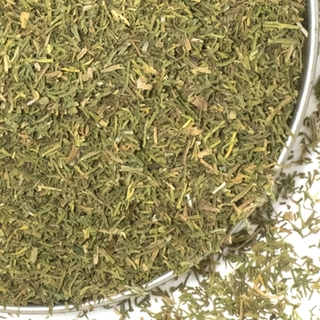
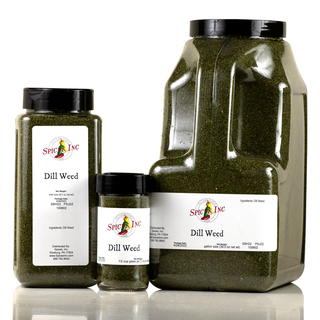


Dill Weed
Dill Weed, Anethum graveolens, is also called bulk dill weed, dried dill weed, dried dill, bulk dill, dill herb or dilly weed. It is comprised of the feathery green leaves of the dill plant. The leaves contain an average of .5% volatile oil by weight.
This plant is one of the few plants that produces both an herb and a spice. The leaves are harvested as an herb. The seeds are a spice known as Dill Seed. While they come from the same plant, Dill Weed and Dill Seed are not interchangeable. Dill Weed has a light and airy essence, while the seed is peppery, with a bitter edge. We also have Dill Seed available for purchase.
Dill Weed is popular with pizza restaurants; delis and cafes; food trucks; breweries; independent spice shops; olive oil shops; distilleries; seasoning companies; and companies who manufacturer food products like meal mixes, dip mixes, cheese and cheese spreads, bloody mary mixes, jerky, salads, and seafood.
Flavor Profile
Dill Weed is breezy and grassy, with top notes of lemon and a bit of caraway and licorice for depth.
How to Use
Dill Weed is often thought of as the first ingredient in Homemade Pickles. It is a standard ingredient in the Greek yogurt dip, Tzatziki Sauce, which then goes great over dishes like Greek Tacos. Dill is delicious with lighter meats, so add some to Herb-Crusted Tilapia or your favorite mild white fish, and serve that with some Fresh Dill Mayonnaise on the side. It’s also terrific on chicken, so make some Grilled Chicken, Potato, and Asparagus Salad. Or make a chewy, airy Focaccia Bread with both dill weed and dill seed for the full range of dill flavor. Dill Weed should be added at the end of cooking time to prevent flavor loss.
Dill Weed is outstanding with breads, fish, dips, gravies, sauces and in salads (especially coleslaw, macaroni and potato), salad dressings, chicken, egg and meat dishes. This herb also pairs exceptionally well with chunky vegetables like beets, beans, carrots and fennel as well as delicate leafy greens.
Dill Weed partners well with basil, garlic, horseradish, mustard, paprika and parsley.
| Also Called | Bulk dill weed, dried dill weed, dried dill, bulk dill, dill herb or dilly weed |
| Species | Anethum graveolens |
| Ingredients | Dried dill leaves |
| Flavor Profile | Grassy and airy with notes of licorice and citrus |
| Oil content | .5% |
| Recommended Uses | Dairy-based sauces, with mild white meats, in bread, over cheese |
| Cuisine | Mediterranean, German, Middle Eastern, American |
| How To Store | Airtight container in a cool, dark place |
| Shelf Life | 6-12 months |
| Country of Origin | England or Egypt |
Nutrition Facts
Serving Size1 tsp
Amount Per Serving
Calories0
% Daily Value*
Total Fat0g0%
Saturated Fat0g0%
Trans Fat0g
Polyunsaturated Fat0g
Monounsaturated Fat0g
Cholesterol0mg0%
Sodium2.5mg0%
Total Carbohydrate0.7g0%
Dietary Fiber0.2g1%
Total Sugars0.0g
Added Sugars0g0%
Sugar Alcohol0.0g
Protein0.2g0%
Vitamin D0mcg0%
Calcium21mg2%
Iron1mg3%
Potassium39mg1%
*The % Daily Value (DV) tells you how much a nutrient in a serving of food contributes to a daily diet. 2,000 calories a day is used for general nutrition advice. These values were calculated and therefore are approximate. For more accuracy, testing is advised.

